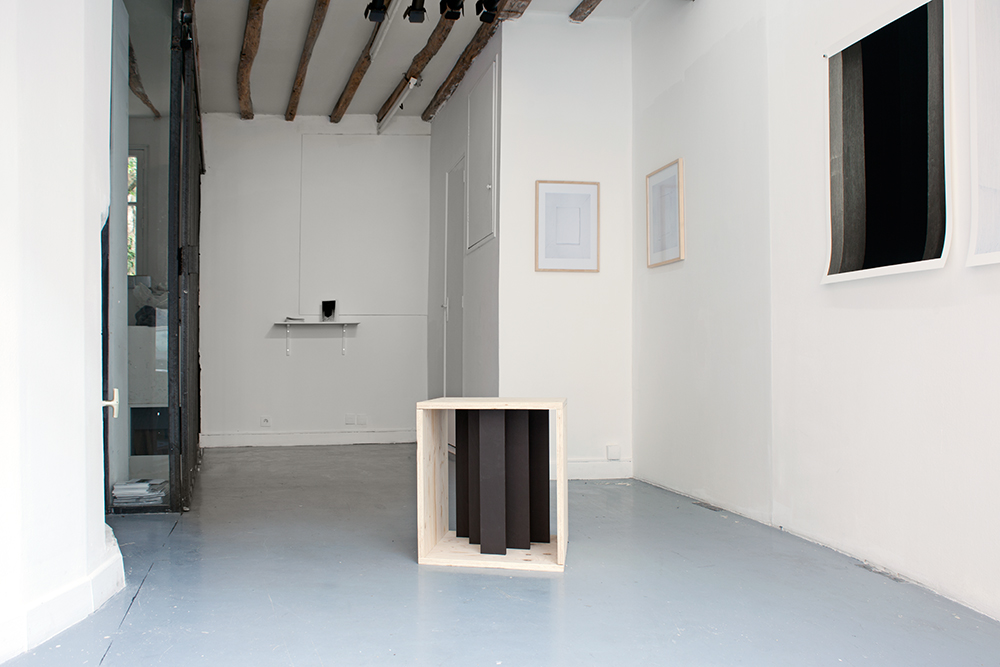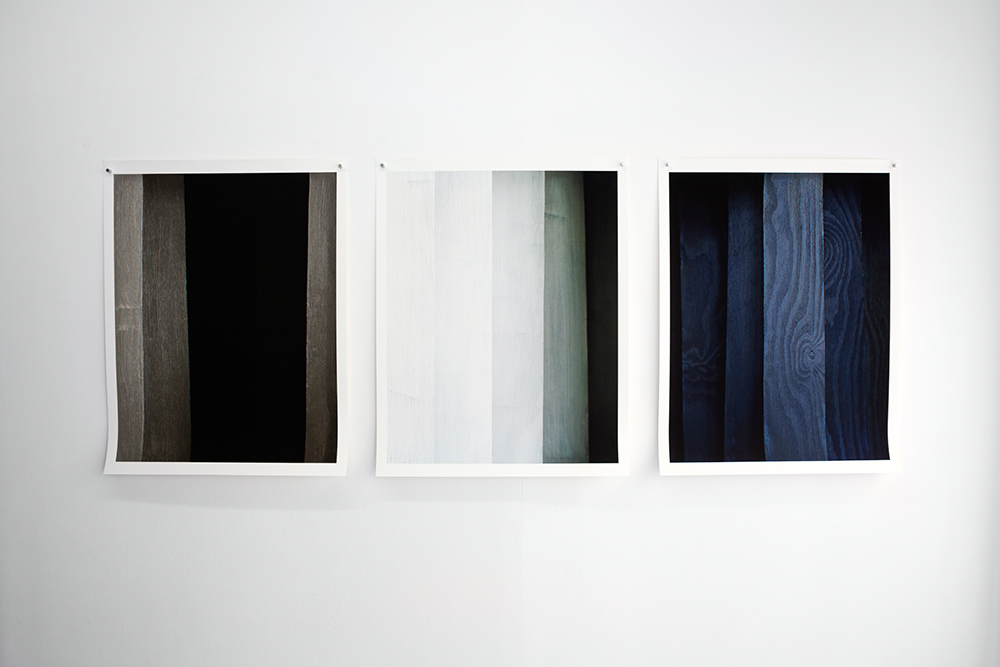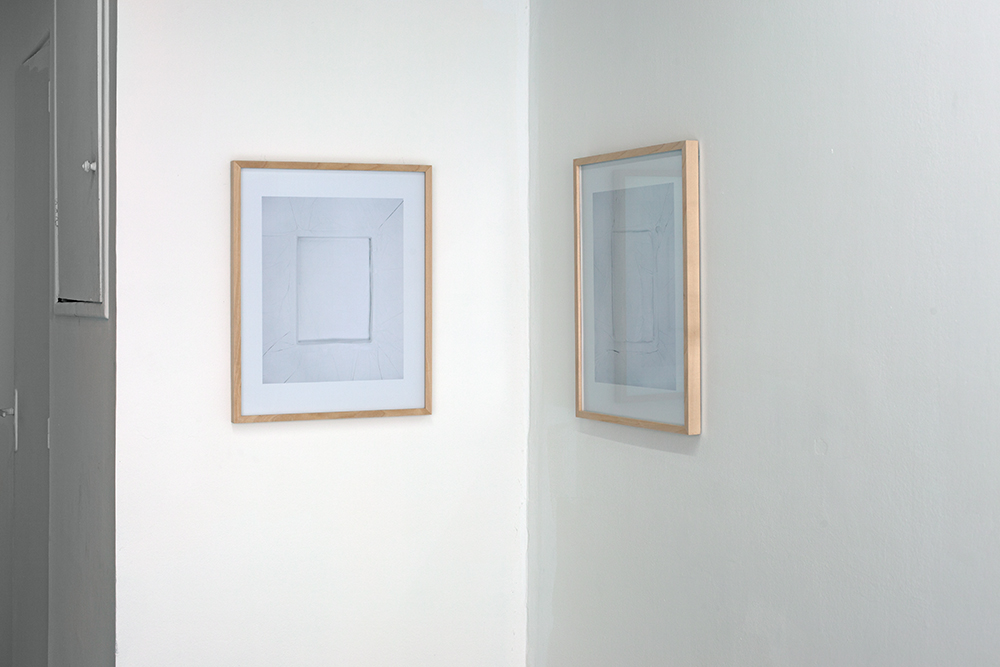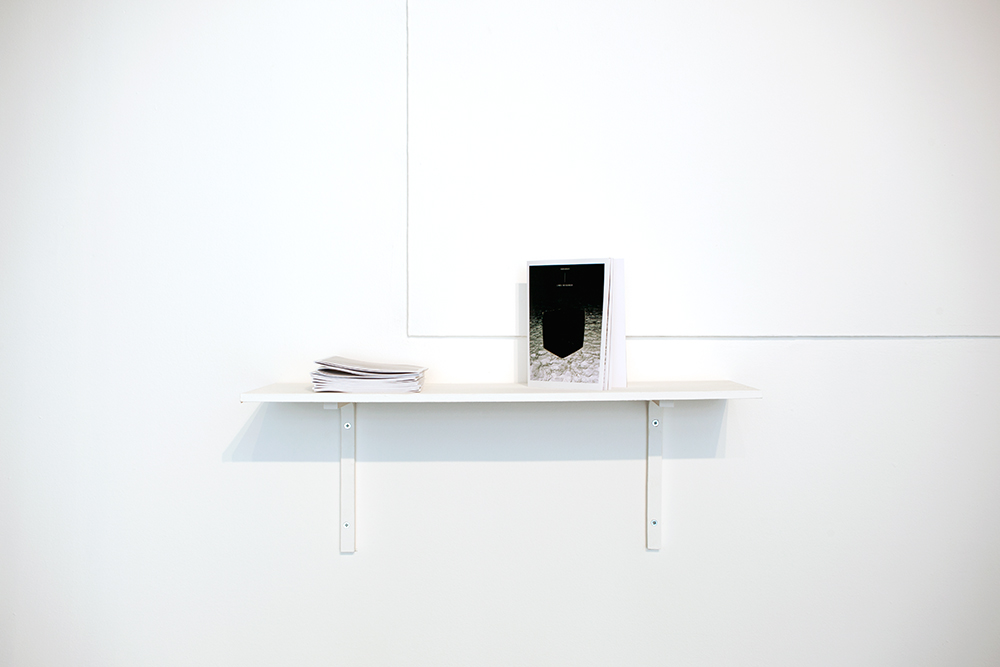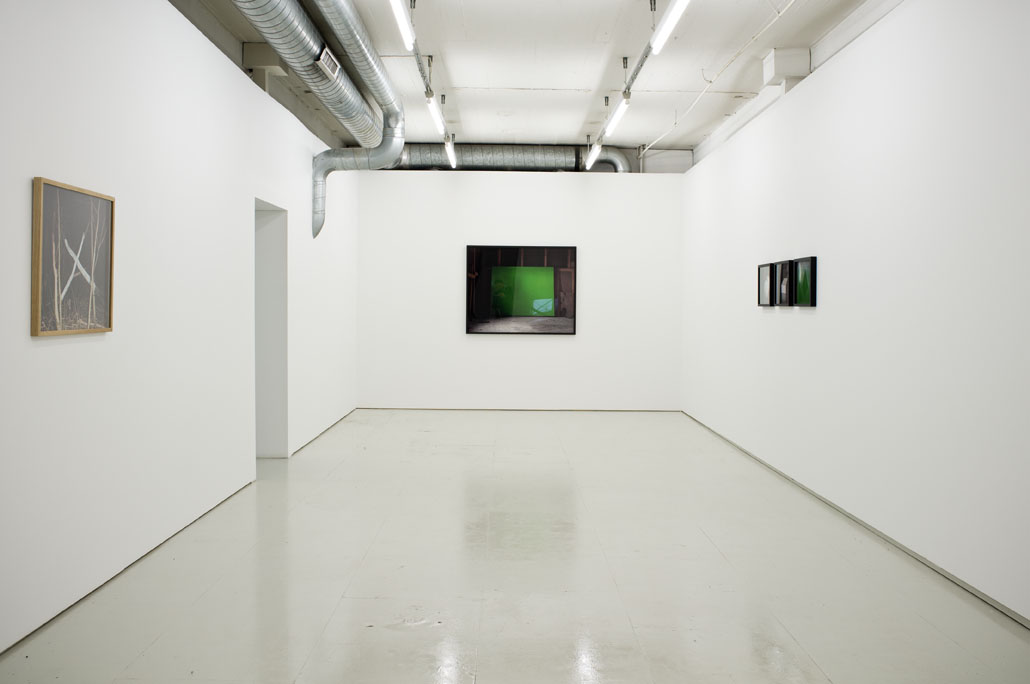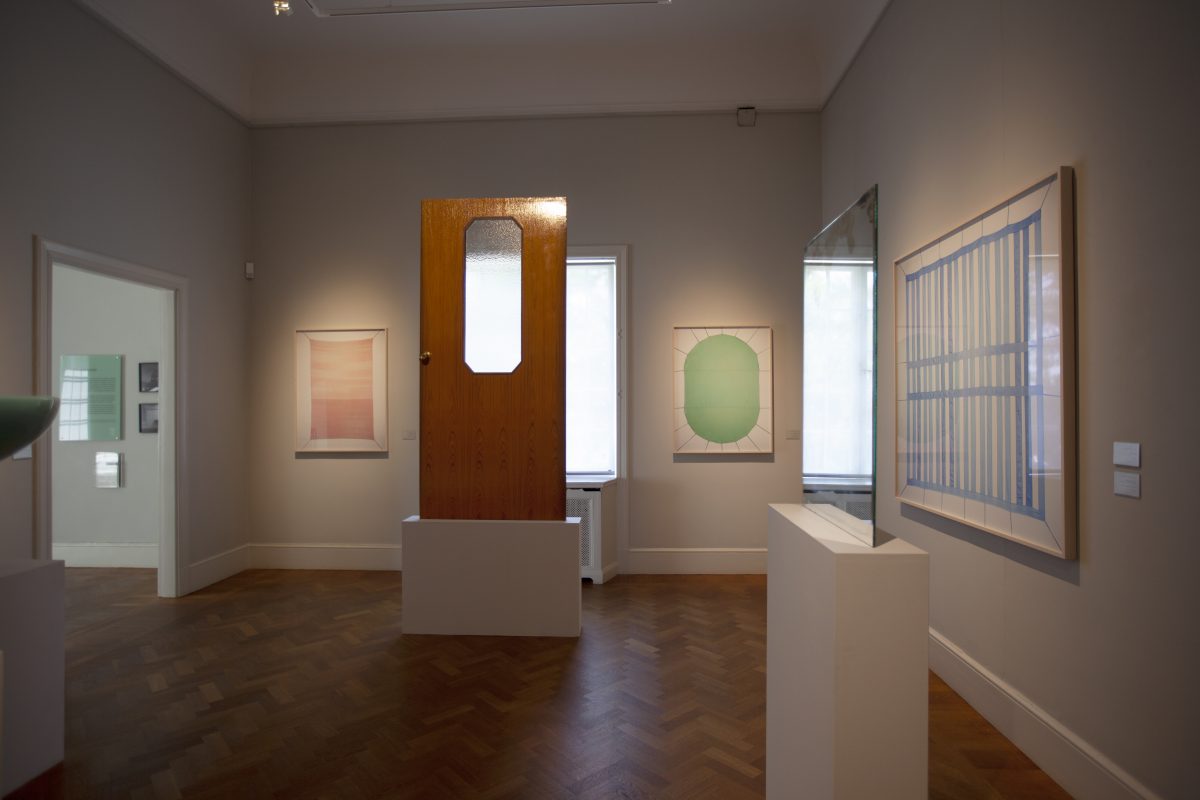VARIABLES
Variables fixed to parameters for an indefinite period of time: such are the photographic operations undertaken in the work of Linda Hofvander. A cardboard stage planted in a snowy landscape is turned to a hollow black monolith: Black. Painted wooden planks are transformed into representations of the decompositions of natural phenomena, like micro narratives of dynamic or stable forces at play: Ditch, Fall, Wave. Convex and concave shapes are shaped out of plaster, where the flattened surface of the images renders identities unclear: Copy I and II.
These desolate pictures, set in a no-man’s land and with nothing to provide scale, ostensibly indicate a return to an autonomous object as subject matter. Their frugal vocabulary seems to point to the remnants, or perhaps the ruins, of high modernism and the subsequent turn to minimalism – indeed, it’s often as two-dimensional reproductions that this history is passed into our collective imagination. Yet, it’s clear that these formal investigations refute any claims of autonomy or idealism.
On the contrary, these constructs reveal themselves as being precisely that, and the result of an action, declaring an intuitive process. The cardboard prop has been delicately placed in the snow, surrounded by trampled tufts of frosty grass. The wooden planks have been painted; the meandering textures of the tree offer a formal counterpoint to the verticality of the polychrome lines. The plaster has been cast and tampered with, revealing cracks, dust, and material irregularities. As much as the apparition of Black intrudes in nature, so does nature intrude into these imperfect arrangements; impurities providing resilience towards any idealistic interpretation. Each image is the result of a twofold intervention on the artist’s behalf: meticulous constructs being just as skillfully subdued to intuition, external forces and elements of chance. Unwilling to succumb neither to illusionism nor to the blunt transposition of a concept into image, the photographic thought here serves as subject matter.
The contingencies are from this point of view suspended in this state, by the photographical means employed by the artist. But even this fixed surface, and the distance that photography purportedly stakes out, may be circumscribed.
In fact, a physical extension is given through the use of a three-dimensional device, named exactly for what it is – Object. A wooden box with painted planks resembles Ditch, Fall and Wave, yet fundamentally different. Its depth allows us to move around it freely thus making two different lectures possible, as the artist informs us: seen from one point of view it reads as a pile; from another, as a pit.
The image thereby literally becomes a stage, incarnating the arena, the field of play for these wavering illusions to operate. Taking the form of a sculpture, it is perhaps best considered as a para-photographic practice, its pivotal position compelling the other pictures to relate to it and activating their spatial properties. And in doing so, Linda Hofvander eloquently employs the photographic medium as a structure of artistic intention.
If photography is contingency it must, Barthes reminds us, put on a mask to signify, hence becoming a primitive theatre. And indeed, the codes of theatricality are here put to play: because it is a matter of setting a scene, directing an action, which is then captured. Or put in cinematographic terms: in Linda Hofvander’s pictures, the old set phrase seems to have been subverted into “Action! Lights! Camera!”.
Her unassuming abstract dramatizations find a historical dialogue in the iconic desolate movie theaters of Hiroshi Sugimoto where the cinematographic narrative of the silver screen has been condensed to its single common formal approximation: the white rectangle.
And so, the images of Variables show the configuration of variables in a given setting captured in transformation. They point simultaneously toward the possibility of condensation and expansion, with nature and object taking turns.
They achieve this, not through the visual transposition of an idea, but by projecting a photographic thought, by activating a chain of contingencies. Not by wandering on a path towards essence, but rather through meditative meanderings in nature, about nature, and on the nature of the medium: leading back to, as Black seems to suggest, to the darkened chamber, the camera obscura.
Linus Gratte

